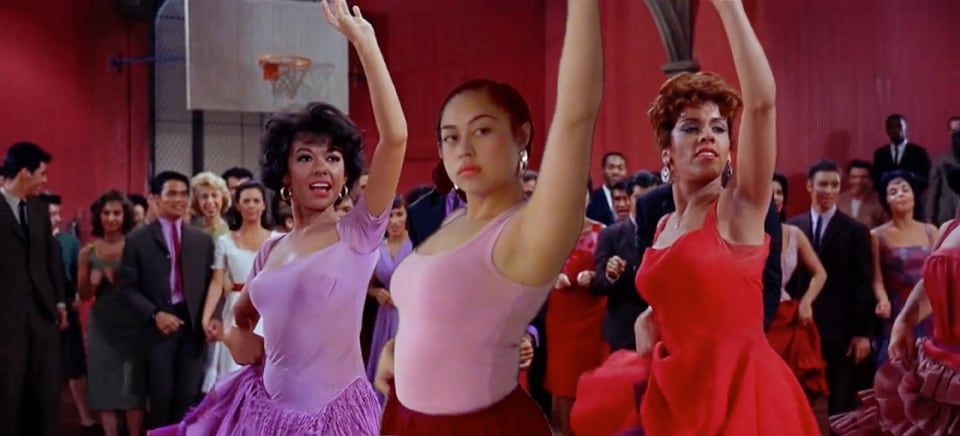
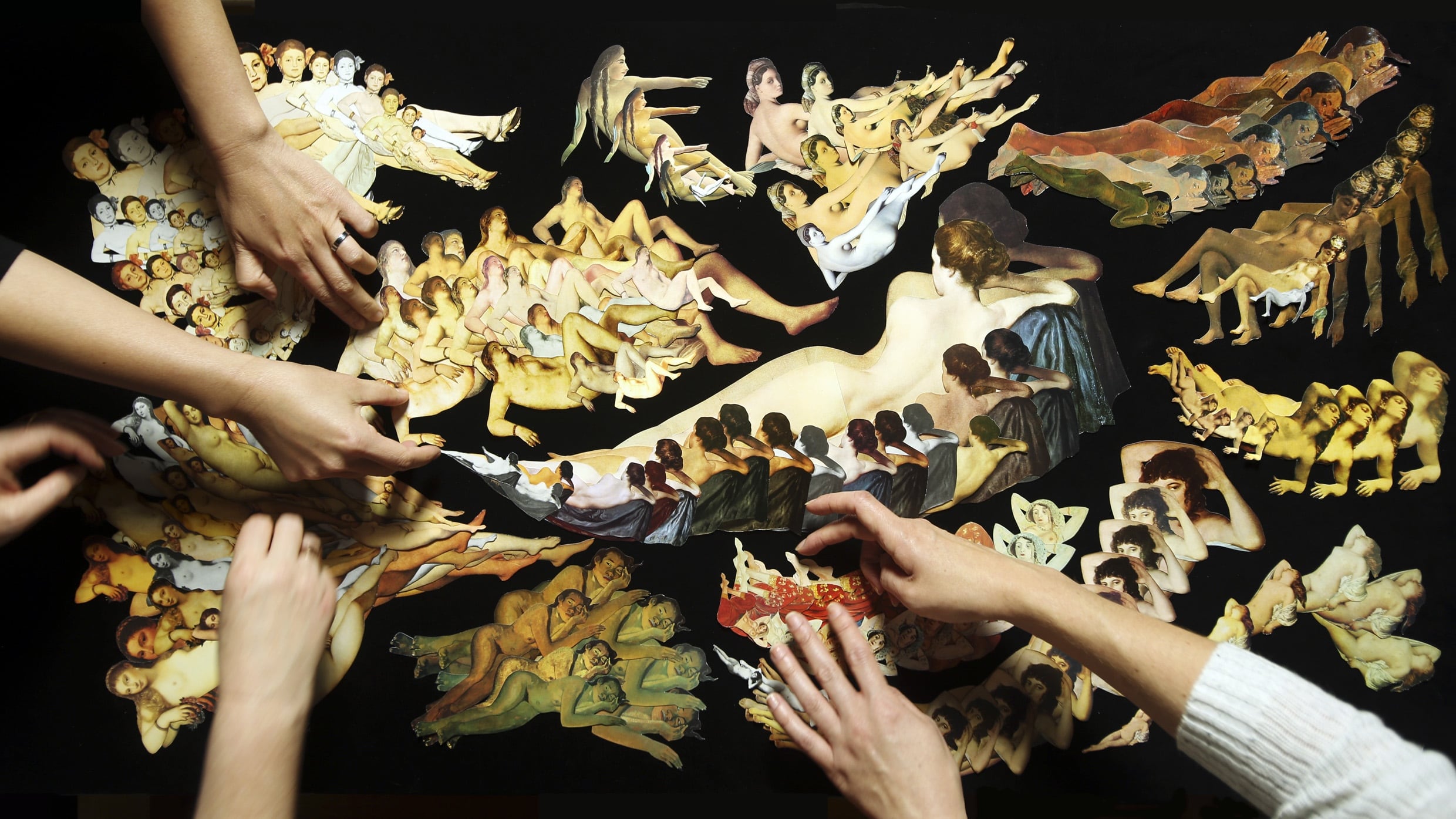
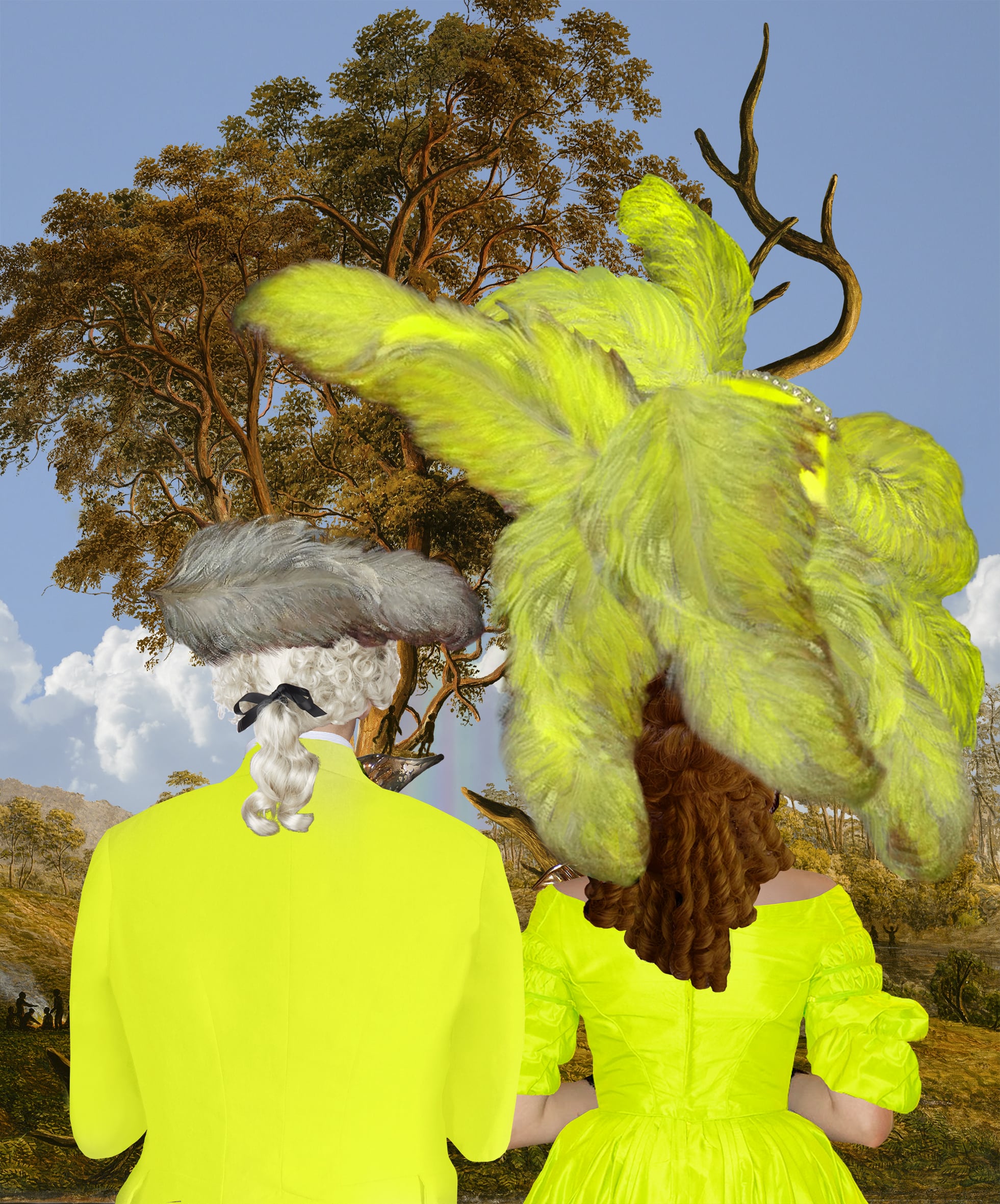
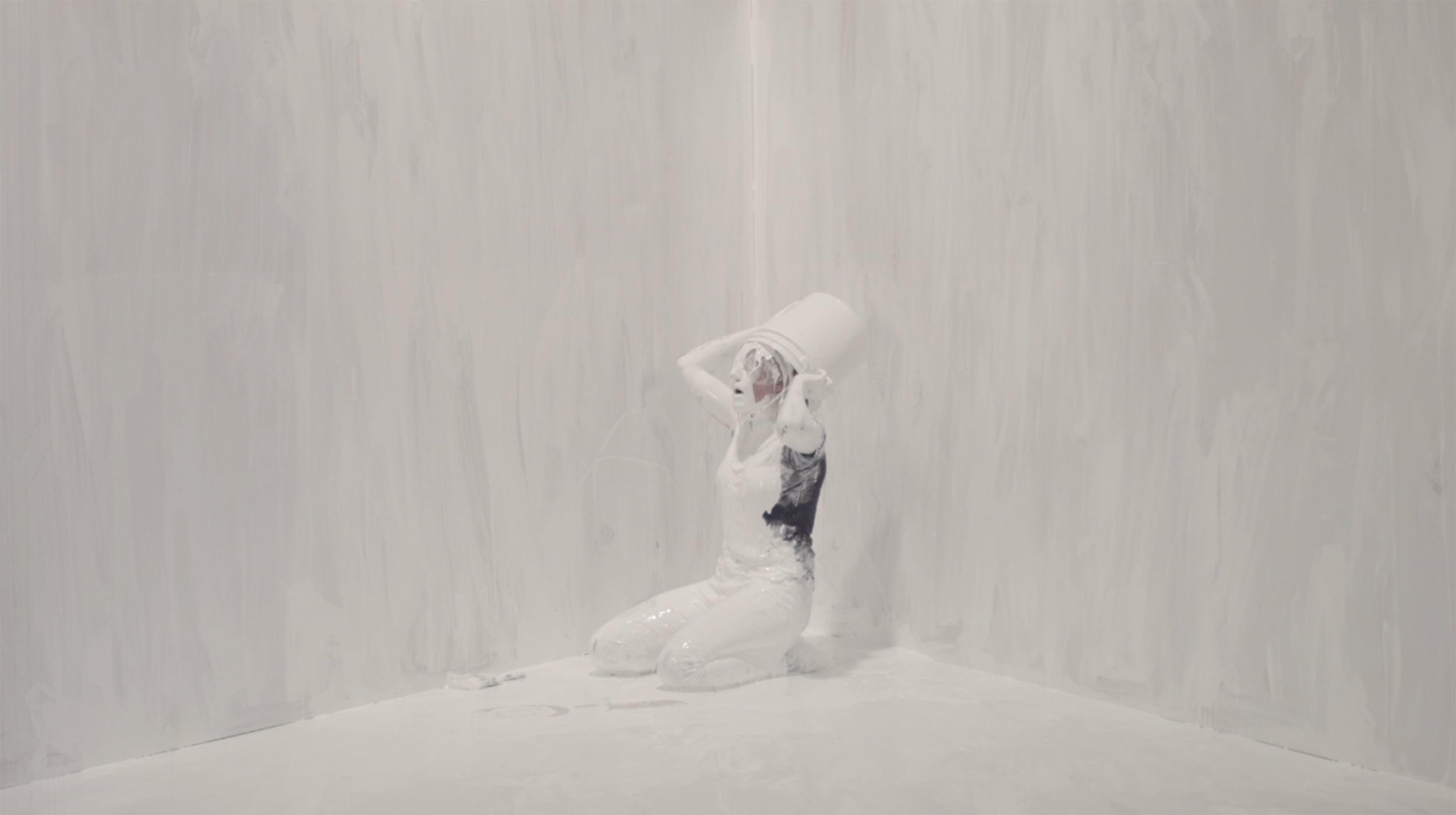
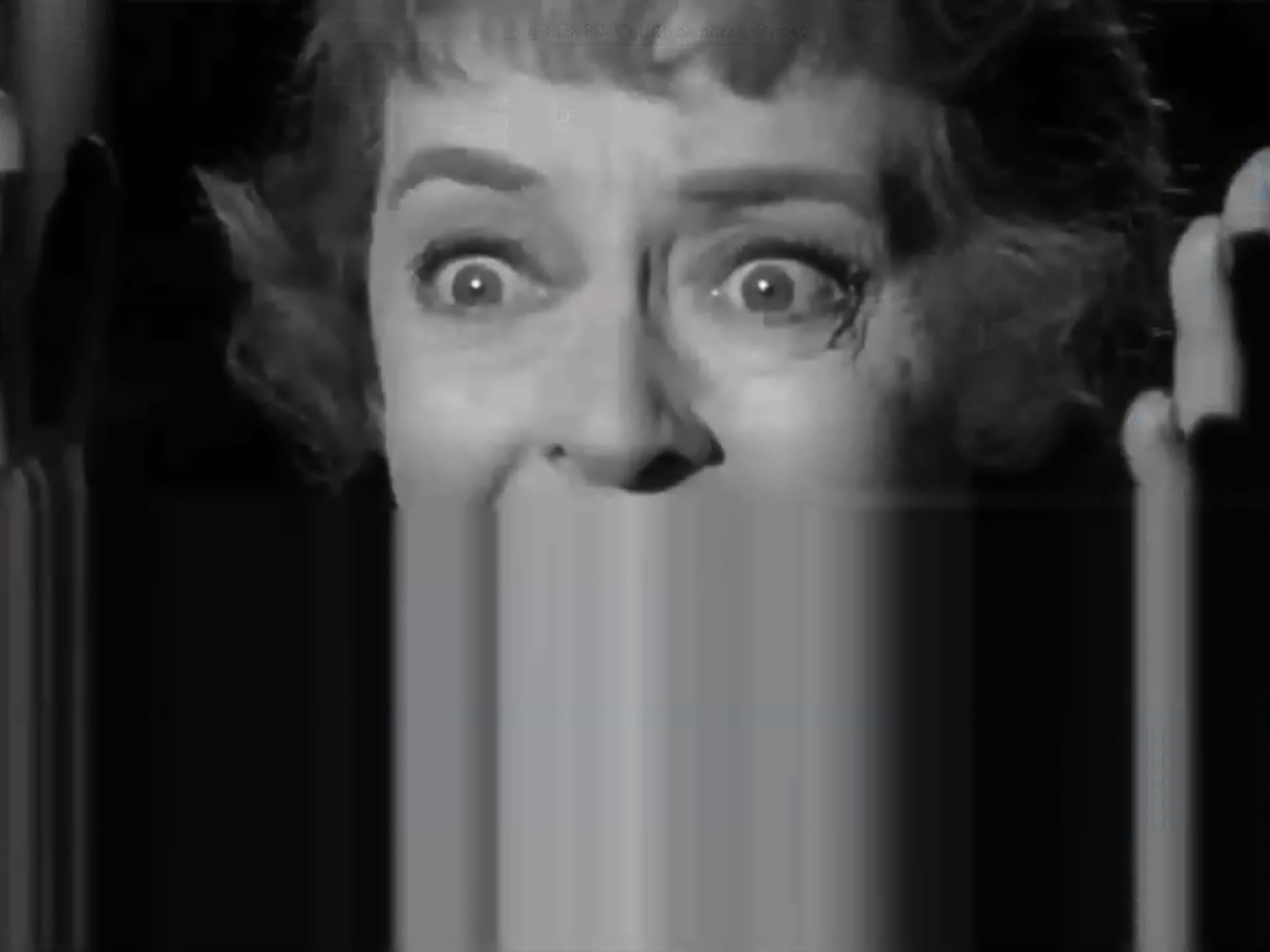
_Artist: Mikala Dwyer and Justine Williams, Amala Groom, Deborah Kelly, Kate Blackmore and Jacinta Tobin, Joan Ross, SodaJerk, Angelica Mesiti and Caroline Garcia
Curators: Diana Baker-Smith and Kelly Doley
As you walk into a dark room, the only source of light is from the screen. You look around. Can I sit? Do I stand? You fumble in and find a bench seat covered with the plushest cover. You sink. Your shoulders roll forwards. Your knees come in close. The darkness transforms you into the viewer. Every so often the doorway shadows as another body blocks out the light from the exhibition space next door. The voices in the darkened room muffle the sounds of shoes nervously hovering. To enter or not to enter.
I'd been wanting to see the exhibition Moving Histories // Future Projections for a couple of months, the initial drawcard being the curators, Diana Baker-Smith and Kelly Doley from the collective Barbara Cleveland. Named for the historically marginalised performance artist Barbara Cleveland, the collective’s projects read history through another lens, shifting focus onto to the female artists who have been undermined and overlooked in the (patriarchal) art history canon.
Luckily for me, I find it hard to imagine an industry without the Carolees, Yokos, Marinas, Anas, and Cindys. Not because we have broken down the system in which constructs of masculinity, and the concluding performance the role requires, dominates – no, rather, because in the social media age, it has become so visible. The rose-tinted glass pane that might have been the glass ceiling for the women in the 1980s is now a mirror in which the Trumps and the Weinsteins of the world can look at themselves. This place of power is now a waiting room for lawsuits and guilt. What, then, comes next? Feminism has a long way to go before it can be claim to be truly representational, as the activism and theory and art of intersectional feminism shows.
This is where exhibitions like Moving Histories // Future Projections can come into play, opening a dialogue about what feminism means, and what it can be.
The exhibition space simply consists of a screen playing in a dark room in a gallery. On the screen, we watch a reel of short video works from artists Mikala Dwyer and Justene Williams, Amala Groom, Deborah Kelly, Kate Blackmore and Jacinta Tobin, Joan Ross, Soda_Jerk, Angelica Mesiti and Caroline Garcia. Each examines their own versions of a retelling of feminist history. By way of introduction to the exhibition, the dLux MediaArts website states:
"Since its invention, film has seemed destined to make history visible. It has been able to portray the past and to stage the present.”1
In turn, the artists have constructed narratives that delve into issues that are at once complex and everyday; the roles that women play in our society. The bodies that play on the screen are underrepresented, still, in popular media: the older bodies; the working bodies; the colonised bodies.
Caroline Garcia uses her short film, Primitive Nostalgia (2014) to evaluate the ways in which bodies of colour have been appropriated consistently throughout history. Garcia inserts her own body in recognisable scenes from Hollywood movies, scenes that trade on the concept of the "other" for entertainment. By positioning herself within these scenes she disrupts the colonial gaze by flipping it back onto the audience member. And we realise with shame and guilt how clearly the Western hegemony objectifies people of colour.2
Where Garcia's work is loud, colourful, and plays on Hollywood's expectations of the “ethnic” body; Kate Blackmore and Jacinta Tobin have created something that resists any notion of conformity. Where Garcia's work is familiar, Blackmore's and Tobin's is not. In Ngallowan (They Remain) (2014), Dharug elder Jacinta Tobin, dressed in red, black and yellow, stands in the middle of the forest, her face hidden but her singing audible. The screen switches between Tobin and Kate Blackmore painting a room - and herself within that room - white. Drawing on the ‘cult of forgetfulness’ articulated in W.E.H. Stanner's ‘The Great Australian Silence' (1968), the artists explore what it means for their culture to be ‘whited-out’.3 Blackmore iterates this quite literally as she rushes to paint the room white, finishing by picking up the bucket and pouring what's left over herself. Juxtaposing the two women in two distinct environments – the natural and the built – suspends us in a mash-up of connotations and applied meaning, showing how perspective changes our understanding of the course of history. Dharug, the language Tobin sings in, is classified as extinct, another devastating product of colonisation but also a question of classification and resilience. How can it be extinct if we are listening to it?
Just as film can allow for new constructs of time, manipulating the archive can play with history and its representations. Two artworks within the reel that enable the female body to evade the objectification of the male gaze are Soda_Jerk’s The Time that Remains (2012) and Deborah Kelly’s LYING WOMEN (2016), using collage to create new contexts and associations. With The Time that Remains we are pulled into a surreal race against the changing of the day with Joan Crawford and Bette Davis the heroine’s of the story. Through the art of post-production, and the remixing of existing tropes, Soda_Jerk create a unique piece of art using archival history "folded into new constellations, producing virtual proximities between disparate temporal moments."4 In (re)constructing new meaning out of symbolic references, and through presentation of a non-linear timeline, The Time that Remains takes the dominant narrative - that the female body is rendered obsolete as it loses youth – and disrupts it.
This remixing is also seen with Deborah Kelly's work, but rather than creating a film from old montages, she has cut out iconic pieces of art history: the reclining nude. The nudes dip across the screen, dancing with each other. Brought back to life and given agency by Kelley, they challenge the gaze of the audience. Removed from their original setting - a still painting in which they are figures to be constructed - they are given their own framework; and their own posse - which I'm sure Taylor Swift would appreciate.
The strength of Moving Histories // Future Projections is not just that it highlights the different types of bodies that are marginalised in history, but also that it places the viewer in a position to experience this multiplicity together. Showing the works on a single screen forces you to watch all of the works in the show in their entirety. Feminist theory is an ideal framework with which to tackle the big issues of today, just as it is part of a movement that imagines an alternative future. However, as articulated by this show, for feminist theory and art to stay current and necessary, it NEEDS to be intersectional. It NEEDS to move beyond the white middle-class ideologies that prohibit real change. It needs to be more than just a hashtag.
Emma-Kate Wilson is an emerging art critic with a background in arts administration. www.emmakatewilson.net
A dLux Media Arts exhibition toured by Museums & Galleries of NSW
ITINERARY
Toowoomba Regional Gallery, QLD 18 February - 23 April 2017
Cairns Regional Gallery, QLD 28 April - 18 June 2017
Mosman Art Gallery, NSW 21 October 2017 - 6 January 2018
Blue Mountains Cultural Centre, NSW 20 January - 11 March 2018
Bega Valley Regional Gallery, NSW 16 March - 28 April 2018
Latrobe Regional Gallery, NSW 5 May - 8 July 2018
Lake Macquarie City Art Gallery, NSW 27 July - 2 Sept 2018
Broken Hill Regional Gallery, NSW 28 September - 11 November 2018
Godinymayin Yijard Rivers Arts and Culture Centre, NT 16 January - 3 March 2019
Wagga Wagga Art Gallery, NSW 16 February - 12 May 2019
[^1]:Harun Farocki and Andrei Ujicā on Moving Histories // Future Projections. dLux Website.
[^2]:CAROLINE GARCIA, PRIMITIVE NOSTALGIA 2014. Sydney Contemporary Website.
[^3]:FLOATING GROUNDS. Nikki Lam Website.
[^4]:Adrian Martin, 2016 “Soda_Jerk: Flowers from the barrel of a gun” Artlink.
